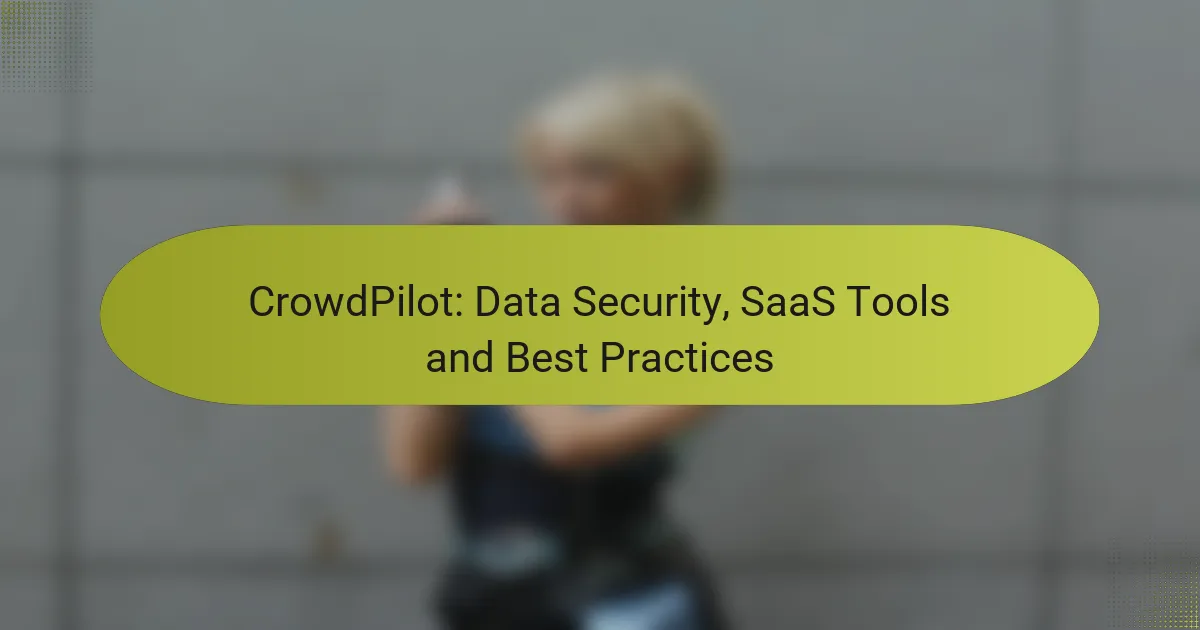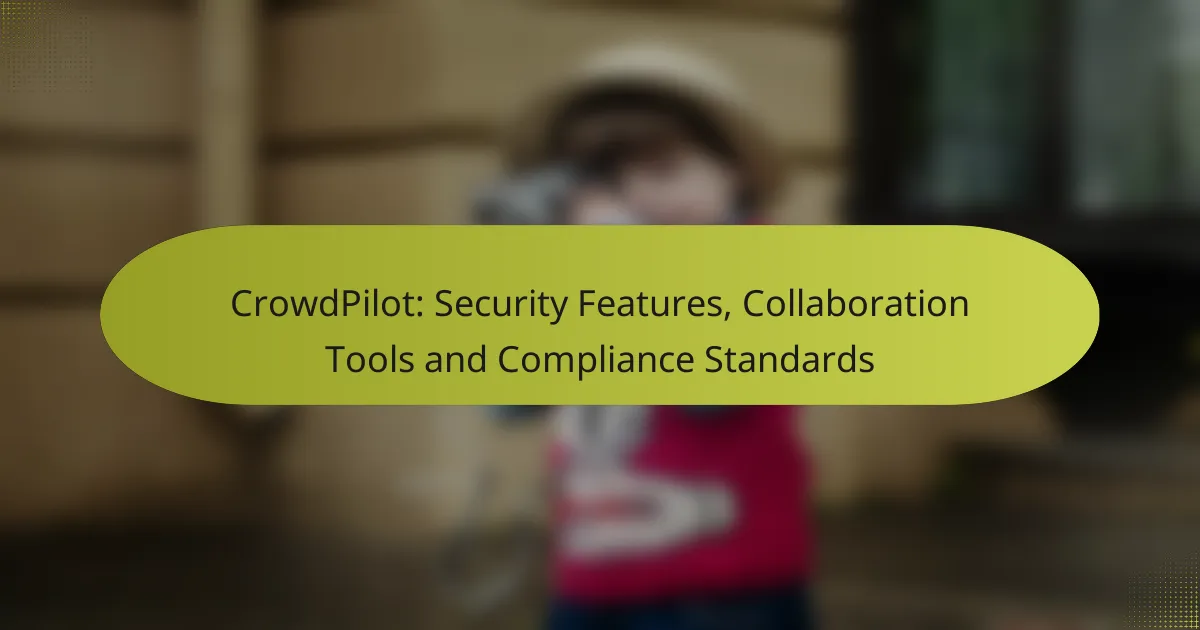CrowdPilot is designed to enhance data security for organizations utilizing SaaS tools by implementing advanced features such as real-time monitoring and customizable security settings. By focusing on robust encryption, strict access controls, and regular security audits, CrowdPilot helps protect sensitive information and ensures compliance with regulatory standards. Its intuitive user interface and seamless tool integration further streamline the management of data security practices.

What are the best data security practices for SaaS tools?
The best data security practices for SaaS tools include implementing robust encryption methods, establishing strict access controls, conducting regular security audits, and providing comprehensive user training. These measures help protect sensitive information and ensure compliance with relevant regulations.
Data encryption methods
Data encryption is essential for protecting sensitive information stored in SaaS applications. It involves converting data into a coded format that can only be accessed by authorized users with the correct decryption keys. Common encryption standards include AES (Advanced Encryption Standard) and RSA (Rivest-Shamir-Adleman).
When selecting encryption methods, consider both data at rest and data in transit. For example, using TLS (Transport Layer Security) for data in transit and AES for data at rest can significantly enhance security. Regularly updating encryption protocols is also crucial to defend against emerging threats.
Access control measures
Access control measures are vital for ensuring that only authorized personnel can access sensitive data within SaaS tools. Implementing role-based access control (RBAC) allows organizations to assign permissions based on user roles, minimizing the risk of unauthorized access.
Additionally, consider using multi-factor authentication (MFA) to add an extra layer of security. This requires users to provide two or more verification factors, such as a password and a mobile authentication code, making it more difficult for unauthorized users to gain access.
Regular security audits
Conducting regular security audits helps identify vulnerabilities and assess the effectiveness of existing security measures in SaaS applications. These audits should include a review of access logs, configuration settings, and compliance with industry standards.
Establish a routine schedule for audits, such as quarterly or bi-annually, and ensure that findings are documented and addressed promptly. Engaging third-party security experts can also provide an objective assessment and recommendations for improvement.
User training programs
User training programs are crucial for fostering a security-conscious culture within organizations using SaaS tools. Training should cover best practices for data handling, recognizing phishing attempts, and understanding the importance of strong passwords.
Consider implementing ongoing training sessions and assessments to keep users informed about the latest security threats and techniques. Regularly updating training materials ensures that employees remain aware of evolving risks and the necessary precautions to take.
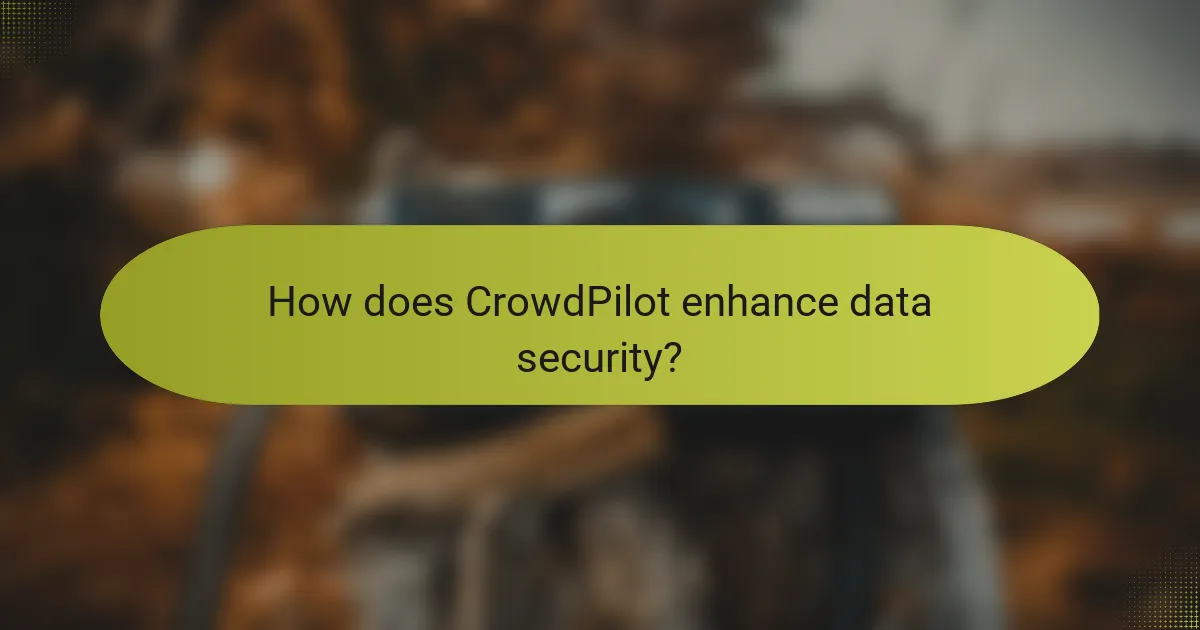
How does CrowdPilot enhance data security?
CrowdPilot enhances data security through advanced features that focus on real-time monitoring, compliance, and prevention of data loss. By integrating these tools, organizations can better protect sensitive information and ensure adherence to regulatory standards.
Real-time threat detection
CrowdPilot employs real-time threat detection to identify and respond to security incidents as they occur. This system monitors network traffic and user behavior, utilizing machine learning algorithms to flag unusual activities that may indicate a breach.
Organizations can expect alerts within seconds of detecting a potential threat, allowing for immediate investigation and mitigation. This proactive approach minimizes the risk of data compromise and enhances overall security posture.
Automated compliance reporting
Automated compliance reporting is a key feature of CrowdPilot that simplifies adherence to various regulations, such as GDPR and HIPAA. The platform generates reports that detail compliance status, making it easier for organizations to demonstrate their commitment to data protection.
These reports can be customized to meet specific regulatory requirements and are typically generated on a regular basis, reducing the administrative burden on teams responsible for compliance. This ensures that organizations remain audit-ready and can quickly respond to regulatory inquiries.
Data loss prevention features
CrowdPilot includes robust data loss prevention (DLP) features designed to safeguard sensitive information from unauthorized access and accidental sharing. These tools monitor data transfers and enforce policies that restrict the movement of critical data outside the organization.
For instance, organizations can set rules that prevent employees from emailing sensitive documents or uploading them to unsecured platforms. By implementing these DLP measures, businesses can significantly reduce the likelihood of data breaches and maintain control over their information assets.

What are the key features of CrowdPilot?
CrowdPilot offers essential features that enhance data security and streamline SaaS tool integration. Its capabilities focus on seamless tool integration, an intuitive user interface, and customizable security settings tailored to user needs.
Integration with existing tools
CrowdPilot integrates smoothly with a variety of existing software tools, allowing organizations to enhance their workflows without major disruptions. This compatibility ensures that users can connect their current systems, such as CRM and project management software, facilitating data sharing and collaboration.
Consider evaluating the specific tools you currently use to ensure CrowdPilot supports them. Common integrations include platforms like Slack, Trello, and Google Workspace, which can significantly improve team communication and project tracking.
User-friendly interface
The user-friendly interface of CrowdPilot is designed to minimize the learning curve for new users. Its layout is intuitive, featuring clear navigation and accessible features that allow users to quickly adapt and utilize the platform effectively.
To maximize efficiency, take advantage of the onboarding resources provided by CrowdPilot, such as tutorials and support documentation. This can help users familiarize themselves with the interface and optimize their use of the tool from the start.
Customizable security settings
CrowdPilot provides customizable security settings that allow organizations to tailor their data protection measures according to specific needs. Users can set permissions, access levels, and data encryption options to align with their security policies.
When configuring security settings, consider implementing role-based access controls to limit data exposure. Regularly review and update these settings to adapt to any changes in your organization’s structure or compliance requirements.
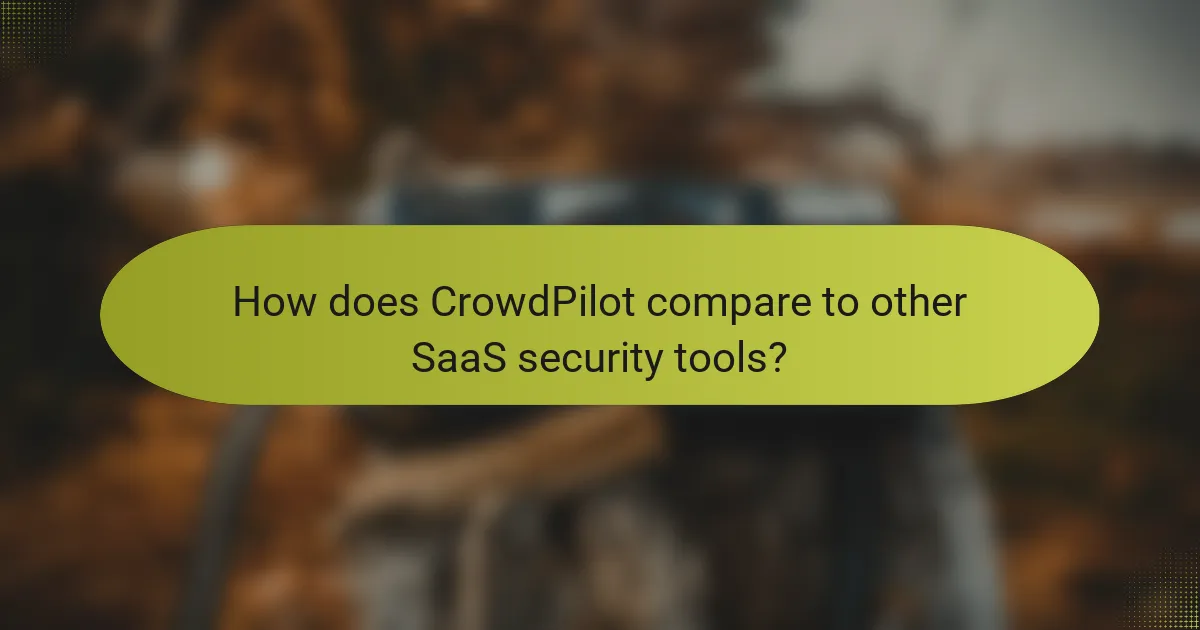
How does CrowdPilot compare to other SaaS security tools?
CrowdPilot stands out among SaaS security tools by offering a unique blend of user-friendly interfaces and robust data protection features. Its focus on real-time threat detection and compliance with industry standards makes it a strong contender against other solutions.
Comparison with Okta
CrowdPilot and Okta both prioritize identity management and access control, but CrowdPilot excels in its real-time monitoring capabilities. While Okta is known for its single sign-on (SSO) features, CrowdPilot integrates advanced analytics to detect anomalies in user behavior, enhancing security.
Organizations looking for comprehensive data protection may find CrowdPilot’s features more aligned with their needs, especially in environments requiring stringent compliance with regulations such as GDPR or HIPAA.
Comparison with McAfee SaaS
CrowdPilot offers a more streamlined approach compared to McAfee SaaS, which is often seen as complex and resource-intensive. While McAfee provides extensive endpoint protection, CrowdPilot focuses on simplifying user experience without sacrificing security.
For businesses that prioritize ease of use and quick deployment, CrowdPilot may be the better choice, especially for small to medium-sized enterprises looking to enhance their security posture without overwhelming their IT staff.
Comparison with Symantec Cloud Security
CrowdPilot’s ability to quickly integrate with existing workflows and its focus on user-centric design make it a favorable option for organizations seeking to enhance their cloud security without extensive downtime or disruption.

What are the pricing options for CrowdPilot?
CrowdPilot offers flexible pricing options tailored to different user needs, including monthly and annual subscriptions, as well as enterprise pricing tiers. Understanding these options can help you choose the best plan for your organization’s data security and SaaS tool requirements.
Monthly subscription plans
CrowdPilot’s monthly subscription plans provide a straightforward payment option for users who prefer short-term commitments. These plans typically range from around $20 to $100 per user per month, depending on the features included.
When selecting a monthly plan, consider the specific tools and functionalities your team needs, as higher-tier plans often offer advanced features such as enhanced security protocols and priority support.
Annual subscription discounts
Annual subscriptions for CrowdPilot can lead to significant cost savings, often offering discounts of 10-20% compared to monthly payments. This option is ideal for organizations that anticipate long-term use of the platform.
To take advantage of these discounts, evaluate your organization’s projected usage and budget accordingly. Committing to an annual plan can also simplify budgeting and financial forecasting.
Enterprise pricing tiers
Engaging directly with CrowdPilot’s sales team is recommended to receive a tailored quote based on your organization’s size and requirements. This approach ensures you get the best value and features suited to your operational demands.
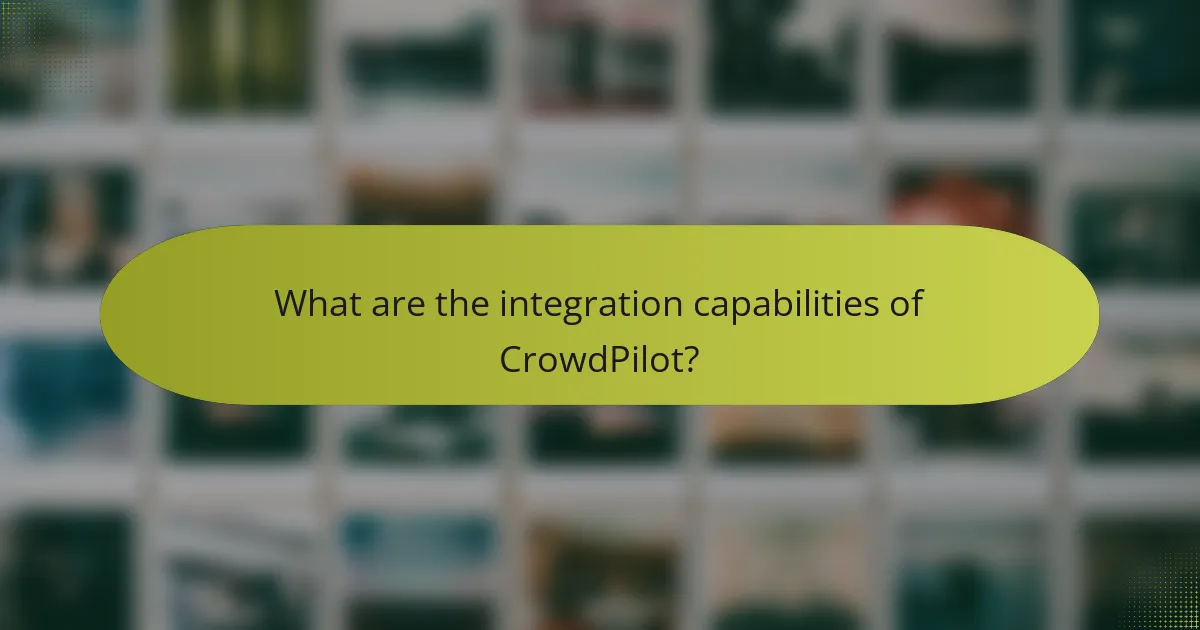
What are the integration capabilities of CrowdPilot?
CrowdPilot offers robust integration capabilities that allow seamless connectivity with various SaaS tools and platforms. This flexibility enables organizations to enhance their data security measures while streamlining workflows across different applications.
Supported Integrations
CrowdPilot supports a wide range of integrations with popular SaaS applications such as Salesforce, Slack, and Microsoft Teams. These integrations facilitate real-time data sharing and communication, ensuring that teams can collaborate effectively while maintaining security protocols.
Additionally, CrowdPilot can connect with various data storage solutions like AWS S3 and Google Cloud Storage. This compatibility allows users to manage their data securely and efficiently, adapting to their specific operational needs.
Integration Process
The integration process with CrowdPilot typically involves a few straightforward steps. First, users need to authenticate their SaaS accounts through OAuth or API keys, ensuring secure access. Next, they can configure the integration settings to define data flow and security parameters.
It’s essential to regularly review and update these settings to align with any changes in business requirements or security standards. This proactive approach helps mitigate potential risks associated with data breaches or unauthorized access.
Best Practices for Integration
To maximize the effectiveness of CrowdPilot’s integrations, organizations should follow several best practices. First, ensure that all connected applications are regularly updated to the latest versions to benefit from security patches and new features.
Second, implement role-based access controls to limit data exposure to only those who need it. This minimizes the risk of data leaks and enhances overall security. Lastly, conduct periodic audits of integration settings and data flows to identify and rectify any vulnerabilities.
